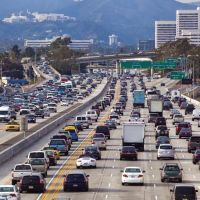The Problem
America’s aging transportation infrastructure is in crisis, with the current annual maintenance investment too low to maintain the system at current performance levels, and a large share of spending done inefficiently. The resulting degradation of the U.S. transportation system has negative economic impacts on households, communities, and the nation alike.
The Proposal
A three-phase proposal would begin with Fix It First, whereby gas tax revenues would be used only for the preservation and reconstruction of existing highways. Expand It Second would change the incentives for new construction by requiring that states borrow from a newly capitalized Federal Highway Bank; they would and repay loans via user fees. Finally, Reward It Third would introduce formal performance standards, including for safety, pollution, speed, and accessibility, with high-performing projects receiving an interest rate reduction on their loans.
Abstract
The roads and bridges that make up our nation’s highway infrastructure are in disrepair as a result of insufficient maintenance — a maintenance deficit that increases travel times, damages vehicles, and can lead to accidents that cause injuries or even fatalities. This deficit is in part due to a prioritization of new projects over care for existing infrastructure and contributes to a higher-cost, lower-return system of investment. This paper proposes a reorganization of our national highway infrastructure priorities to “Fix It First, Expand It Second, and Reward It Third.” First, all revenues from the existing federal gasoline tax would be devoted to repair, maintain, rehabilitate, reconstruct, and enhance existing roads and bridges on the National Highway System. Second, funding for states to build new and expand existing roads would come from a newly created Federal Highway Bank, which would require benefit-cost analysis to demonstrate the efficacy of a new build. Third, new and expanded transportation infrastructure that meets or exceeds projected benefits would receive an interest rate subsidy from a Highway Performance Fund to be financed by net revenues from the Federal Highway Bank.


